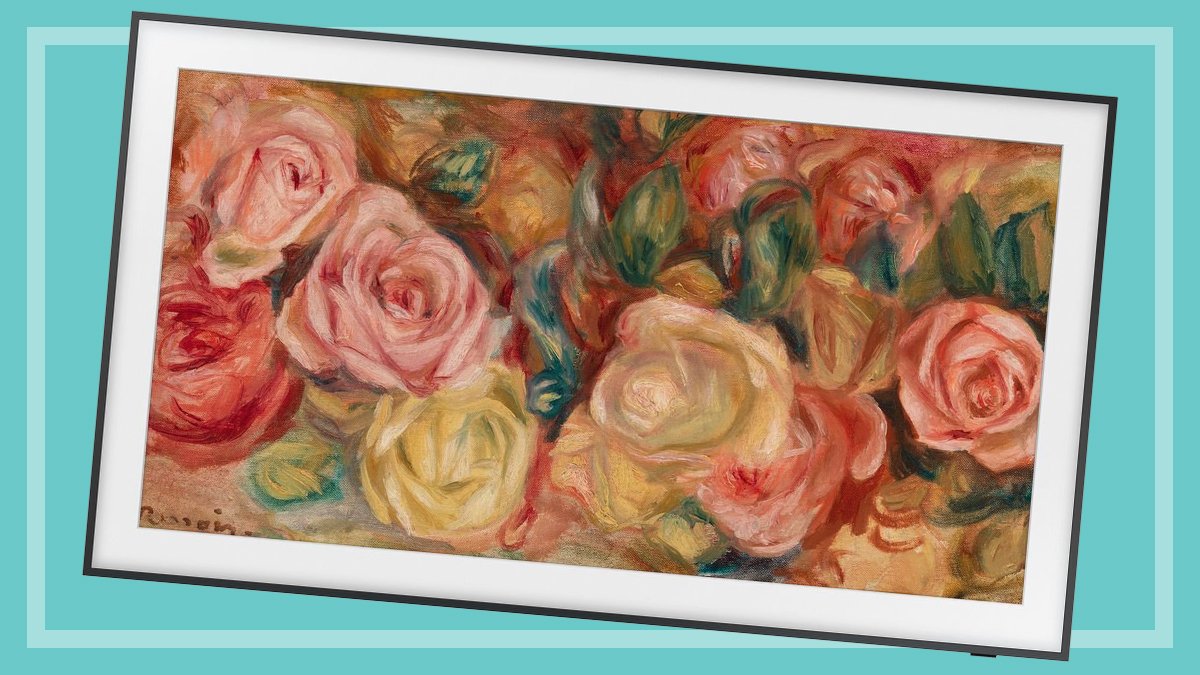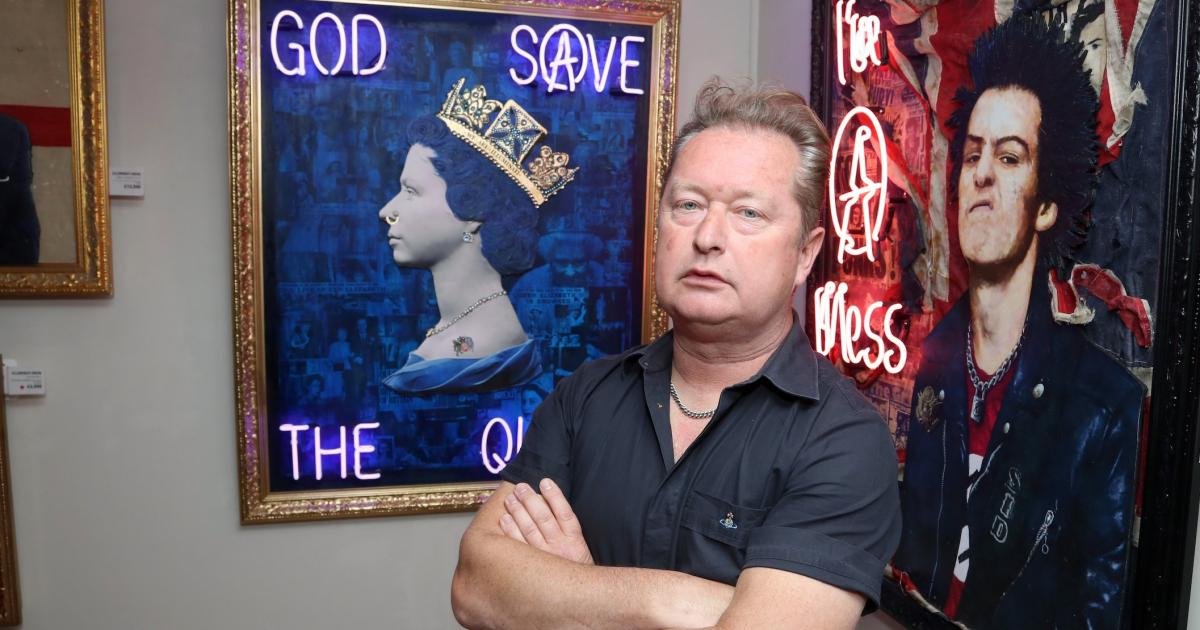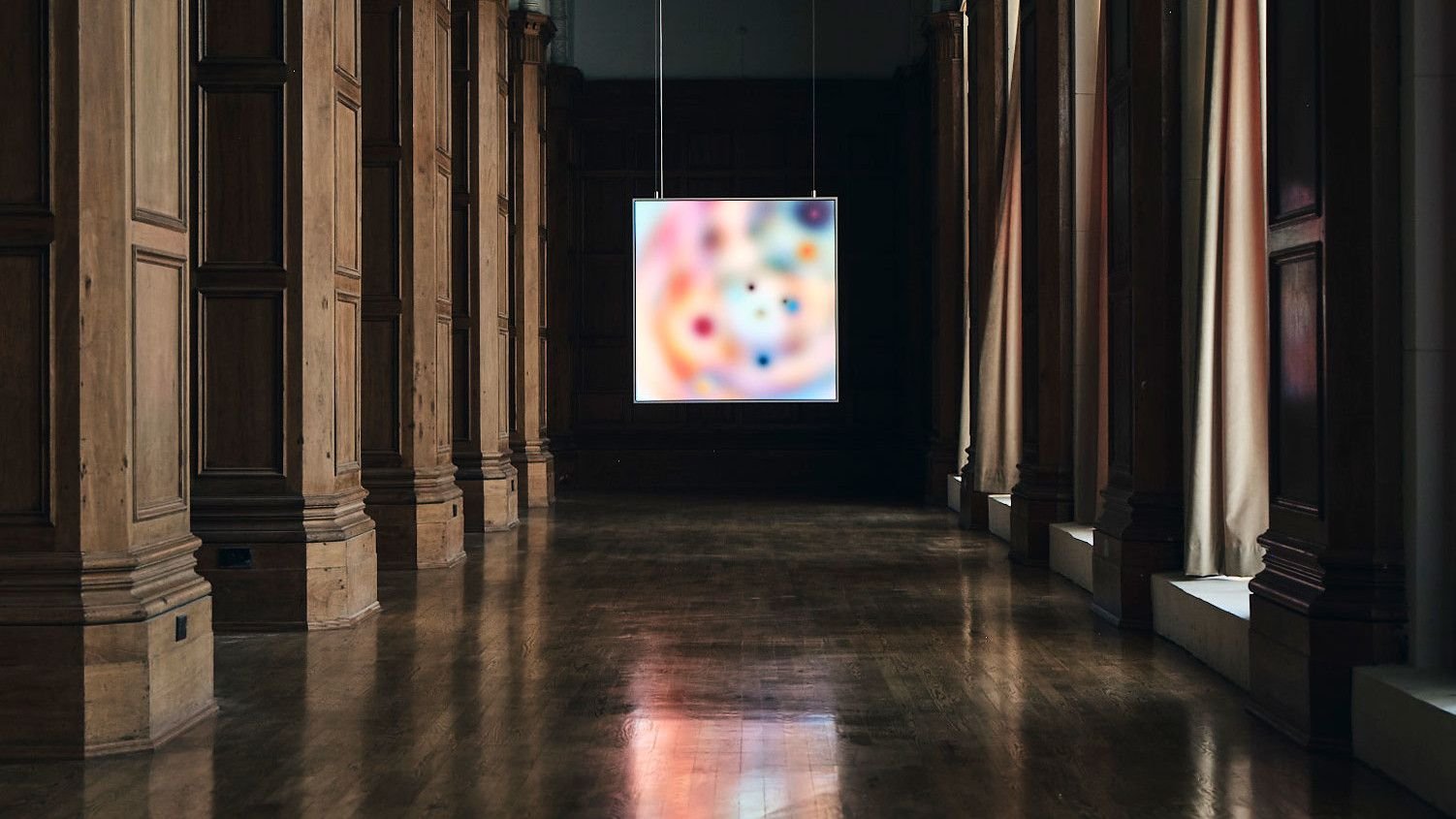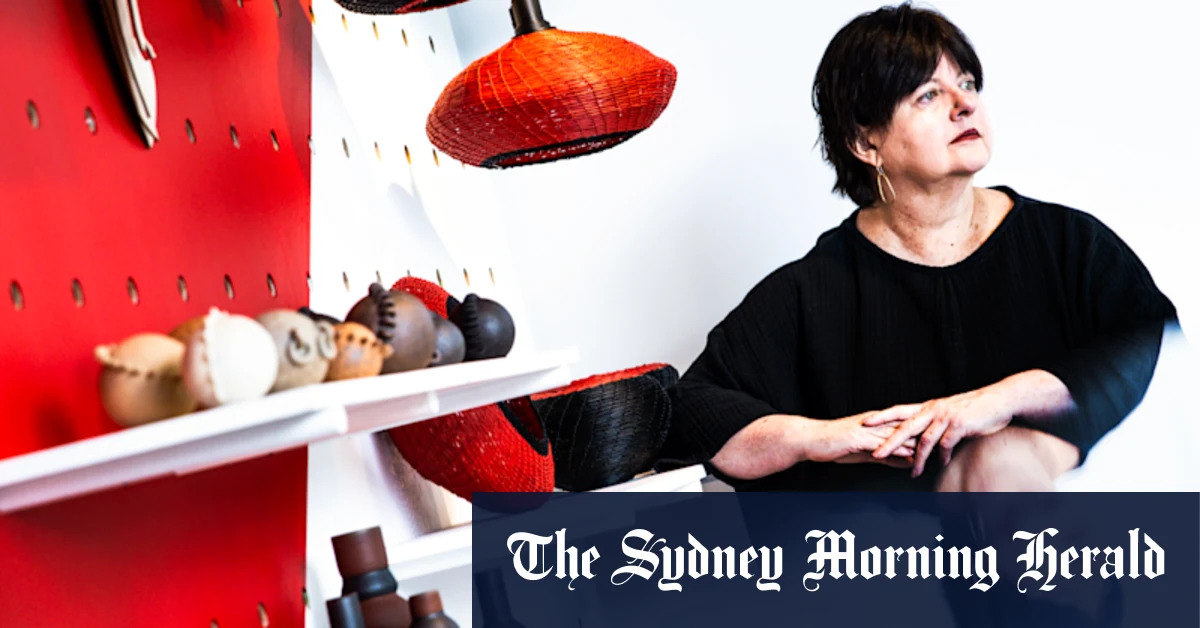Need to know
- Art TVs are designed to display artworks in standby mode, instead of a black screen, so they blend into your living space
- They use special matte screens that replicate the look of a canvas or print but this can come at the cost of picture quality for movies, shows, games, sports and so on
- The Frame TV from Samsung is the most well-known model and the best for displaying art, but there are alternatives from Hisense, LG and TCL
There’s nothing quite like a nice painting, sketch or photograph to really bring a room together. Walls adorned with art are the line in the sand between a sad, poster-clad bachelor pad and warm, well-designed interiors. But artworks can be expensive and don’t leave much wall space for a TV.
Your interior design problems don’t end there. The dark, black, empty look of a TV screen in standby can seem quite out of place in a nicely organised room – unless you’re really into Mark Rothko.
This is where an ‘art TV’ (sometimes called a ‘lifestyle TV’) can really tie the room together. They use specially designed screens to emulate the look of a canvas or print, so you can display digital artworks between Netflix binges. Samsung’s ‘The Frame’ is the best known option, but you can find similar TVs from Hisense, TCL and LG.
The dark, black, empty look of a TV screen in standby can seem quite out of place in a nicely organised room
The idea is that they always blend into the room in standby, compared to an LG OLED or Samsung QLED display, for example. Not only is this often cheaper than buying large art prints, most manufacturers offer sizable collections, so you can easily rotate through works when it’s time to change up the room.
But does the art really look that good? Can TVs like Samsung’s The Frame convince jealous in-laws that you’ve come to acquire an original Van Gogh? And how do they perform as TVs?
On this page:
Samsung’s The Frame – and other art TVs – explained
So how do TVs like The Frame differ from a standard TV screensaver? While most TVs enter a standby mode when not in use, these models shift into a low-energy ‘art mode’. Instead of a black void, they display a single artwork or rotating selection, so the screen can blend into your room in a more aesthetically pleasing way.
These TVs typically give you access to sizable digital galleries, such as paintings, drawings, portraits, photography and more. Most feature a variety of well-known artists, like Van Gogh, alongside independent or lesser-known creators and generic images.
The three art TVs that you’re likely to find at popular retailers are:
But the key difference between these models and standard TVs isn’t the fact they show artworks – it’s in the display. Unlike most TVs, which have a reflective, gloss or semi-gloss coated screen, ‘art’ TVs typically use a QLED display with a matte finish. This creates a flatter, canvas- or print-like look with almost zero reflection.

Art TVs like The Frame are designed to blend into the room (image supplied by Samsung).
Other key differences include:
- Bezel (frame): Art TVs use a thick, black bezel around the screen to help replicate the look of a picture frame, in contrast to many modern TVs that have tiny, almost non-visible bezels.
- Placement: Though these TVs have optional legs to place on the floor or TV unit, they’re really designed to be wall mounted in the same way you would hang a framed print or painting.
What about LG?
LG does sell some TVs that are similar to The Frame but aren’t quite art TVs. They’re expensive and not really aimed at most consumers. Instead, LG includes a gallery mode with most of its TVs, including the popular OLED range.
The pitch is similar to Samsung. Compatible LG TVs (you can find a list of incompatible models here) can display art in a semi-standby state called Gallery Mode. However, the glossy finish and OLED display don’t look anything like a canvas or print.
You can also find some sleek-looking LG OLEDs called Gallery Design. These are designed to blend into spaces like galleries, offices and homes with a very particular style and so on. But the TV itself still functions as a regular LG OLED – it’s mostly an aesthetic difference.
How much does The Frame and similar TVs cost?
The recommended retail prices for 65-inch models from the 2024 range are below. Note, prices will change depending on the screen size:
- Samsung – The Frame: $2499
- TCL – Nxtframe: $2299
- Hisense – Canvas (65S7NAU): $2299
A 2025 LG OLED, while not strictly an art TV, will set you back $4299. 2024 models are in clearance mode and well worth picking up at steep discount, if you can find any.
Samsung also requires a subscription fee to access the full range of artworks in its database. It’s the only art TV range with ongoing costs, though you do get access to a handful of images for free with the TV. Subscription fees are $5.99 a month or $59.90 a year.
Which TV has the best range of art?
Samsung’s Art Store, which is exclusive to The Frame range of TVs, has the biggest and best selection – if you can afford it. The subscription fee gives you access to over 2500 artworks, professionally curated in partnership with real-world galleries.

Faux frame attachments can sell the idea that you’re looking at a canvas instead of a screen.
Some works rotate in and out on a seasonal basis to focus on particular artists, styles or periods in history. Others are a bit more contemporary or connected to pop culture. For example, a recent partnership with Disney has brought licensed works from Star Wars, Pixar, National Geographic and classic Disney characters to the gallery.
TCL, Hisense and LG don’t charge a subscription fee, but the quality of their galleries can vary. TCL, for example, taps into Google’s ambient-art library which has hundreds of images on hand with many from popular artists. But it feels like it’s lacking the curation that Samsung’s The Frame provides.
Hisense, meanwhile, is pretty expansive, with over 300 artworks included with the Canvas and more than 1000 in total if you sign up for a free Hisense Vidaa account. It’s a step above TCL and LG but still not quite as robust as The Frame.
You can also upload your own images
And LG? Well, an art mode is there, the selection is OK but it’s far and away the weakest of the bunch. You wouldn’t buy an LG OLED just for the art mode, let’s put it that way.
You can also upload your own images. This is a great way to use TVs like The Frame on a budget, what with all the art that’s available for free in the public domain.
AI art
Samsung and TCL art TVs can also use inbuilt AI software to generate “art”. This means each gallery is theoretically limitless, albeit with some ethically grey overtones, as the AI prompts are designed to create “art” that looks similar to famous works.
But how do they perform? The Frame sort of treats AI art as a secondary feature. It’s there, but Samsung encourages you to focus on the curated galleries, licensed works from famous artists etc that are included with the subscription.

TCL’s Nxtframe can generate AI art but it looks a little tacky.
TCL, however, puts this feature front and centre and honestly, it’s easy to use with impressive results. All you need to do is direct the TV to generate images in the style of famous artists with a few prompts, such as an impressionist painting of a peaceful home.
But it’s not the real thing and actual artists probably aren’t making money from this feature. It’s kind of like buying a generic wall filler from Ikea versus a licensed copy – except no one is getting paid.
Which art TV is best?
Samsung’s The Frame is the best option for displaying digital art with a convincing canvas look. However, CHOICE experts found it to be a little lacklustre for movies, shows, sports etc when we ran it through our tests. It’s also the only option that requires a paid subscription to access the full range of images.
Though LG’s OLED range performed very well in our home entertainment tests, the art features feel like a bit of an afterthought. Portraits, photos and such are striking, but they don’t look like they’ve been printed on a canvas.
The alternatives from TCL and Hisense are solid allrounders that cost a little less than The Frame. Though they’re both quite good for displaying art and home entertainment, neither outperforms The Frame or LG’s OLEDs. But they’re still good options if you’re looking for a jack-of-all-trades art TV.
Is Samsung’s The Frame better than an LG OLED?
As a screen for watching movies, shows, sport and playing games, no. The Frame, and other art TVs from TCL and Hisense, don’t score as well as LG OLEDs in our home entertainment tests. That doesn’t mean an art TV is necessarily better, it just depends on your needs.
Our TV tests found that The Frame is a pretty good option for watching movies and shows, but it’s far from the best TV out there. TCL’s Nxtframe and Hisense’s Canvas fared a bit better, earning good results overall in our viewing tests. But none of these can match the picture quality of an LG OLED.
This mostly comes down to the matte display that The Frame, the Canvas and Nxtframe use to create more of a canvas look. Matte screens tend to look quite flat and soft, with somewhat duller colours and elevated (brighter) blacks.
If a static image is on an OLED screen for too long it may start to imprint, or ‘burn-in’, on the screen
But gloss and semi-gloss TVs, particularly OLEDs, tend to ‘pop’ more, which means things like better contrast, deeper, richer blacks and much more vibrant colours. This eye-catching palette can really enhance the viewing experience, especially in 4K, as images feel impactful and exciting.
Art on an OLED is nice but it just doesn’t look as convincing as a matte screen. And then there’s the risk of burn-in. If a static image is on an OLED screen for too long, it may start to imprint, or ‘burn-in’, on the screen. This leaves portions of the image permanently visible on screen, effectively ruining the TV.
LG’s Gallery Mode doesn’t allow static images to reduce the risk of burn-in. Instead, they’re cycled out after a short period of time which protects the TV, but kind of negates the point of letting the screen blend into the room as a piece of art. If anything, Gallery Mode feels more like a slide-show or screen saver.
Other things to consider when buying an art TV
Keep these features in mind if you’re shopping around for The Frame or other art TV.
Magnetic frames
Samsung, TCL and Hisense sell a small range of these that attach to the TVs, to replicate the look of a framed painting hanging on a wall.
Motion sensors
Samsung’s The Frame and Hisense’s Canvas have these which turn the TVs on/off when it detects people are in or have left the room. This can help reduce energy costs.
Floor stands
Samsung and TCL sell long legs for their TVs.
Rotating wall mount
You can buy an additional rotating wall mount for The Frame which can switch the orientation for landscape and portrait images.
Cord concealment and storage
Dangling cables break the illusion of artwork on your wall, so you’ll need to work out how you’re going to conceal them from other devices like media streamers, games consoles and the power supply.
Dangling cables break the illusion of artwork on your wall, so you’ll need to work out how you’re going to conceal them
Samsung has solved this problem, for the most part. The Frame uses Samsung’s One Connect Box, an external hub for other devices like a laptop, games console and so on. The Box itself connects wirelessly to the TV, so you don’t need to worry about concealing any cables from behind the TV (aside from the power cord).
LG, TCL and Hisense don’t seem to sell their own versions of the One Connect Box.
What’s the best screen size for your room?
This all depends on the size of your room or where you plan to put the couch. For example, you’ll get the best picture quality by sitting 1.25–2.5 metres away from any 65-inch, 4K TV, which is the most popular screen size in Australia.
The thing is, these TVs aren’t cheap so you want to make sure you buy the right one. So check out the link above for a detailed guide on how to measure, pick and place the optimal TV for your room.
Is Samsung’s The Frame TV worth it?
This really depends on what you want out of your home entertainment setup. If you’re mainly focused on interior design and placing the TV in a spot where it fits into the overall flow and look of your room, then The Frame – or a more affordable alternative – is absolutely worth it.
They’re still good options for home entertainment and art looks quite convincing until you do a double take. You won’t need to worry about one corner of the room becoming an ugly black void when the TV is turned off.
But art TVs will probably leave you wanting more if home entertainment is your main interest. Their matte screens don’t deliver the same visual impact with movies, shows, sports and games as a gloss/semi-gloss OLED.
We’re on your side
For more than 60 years, we’ve been making a difference for Australian consumers. In that time, we’ve never taken ads or sponsorship.
Instead we’re funded by members who value expert reviews and independent product testing.
With no self-interest behind our advice, you don’t just buy smarter, you get the answers that you need.
You know without hesitation what’s safe for you and your family.
And you’ll never be alone when something goes wrong or a business treats you unfairly.
Learn more about CHOICE membership today
Stock images: Getty, unless otherwise stated.







